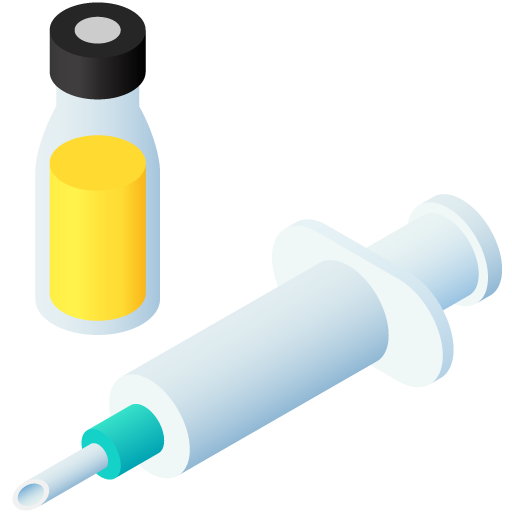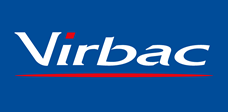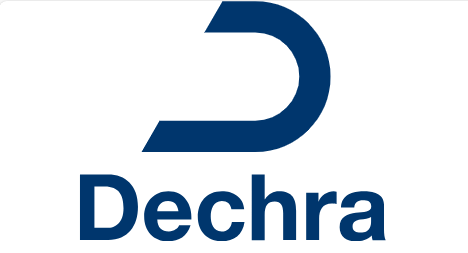Carprieve
Active substance
ATC code
Species
Cattle.
Indications
Reduction of pyrexia in acute cases of infectious respiratory disease in cattle, in combination with appropriate anti-infective therapy.
Dose to be administered and administration route
Single subcutaneous or intravenous injection at a dosage of 1.4 mg carprofen per kilogram (1ml/35kg) bodyweight in combination with antibiotic therapy, as appropriate.
Do not exceed 3 broachings per vial. If more than 3 broachings are required, the use of a draw-off needle is recommended.
Adverse reactions
Studies in cattle have shown that a transient local reaction may form at the site of subcutaneous injection, however this should disappear within 24 hours after the injection.
Dispensing
POM-V - Prescription Only Medicine – VeterinarianSUMMARY OF PRODUCT CHARACTERISTICS
1. NAME OF THE VETERINARY MEDICINAL PRODUCT
Carprieve 50mg/ml Solution for Injection for Cattle
2. QUALITATIVE AND QUANTITATIVE COMPOSITION
Active Substance:
|
Carprofen Excipients: |
50 mg/ml |
|
Ethanol (anhydrous) |
0.1 ml/ml |
Sodium Formaldehyde Sulphoxylate 2.0 mg/ml
For a full list of excipients, see section 6.1
3. PHARMACEUTICAL FORM
Solution for Injection.
A clear colourless to pale yellow solution.
4. CLINICAL PARTICULARS
4.1 Target species
Cattle.
4.2 Indications for use, specifying the target species
Reduction of pyrexia in acute cases of infectious respiratory disease in cattle, in combination with appropriate anti-infective therapy.
4.3 Contraindications
Do not use in animals suffering from cardiac, hepatic or renal impairment.
Do not use in animals suffering from gastrointestinal ulceration or bleeding.
Do not use where there is evidence of a blood dyscrasia.
Do not use in animals with known hypersensitivity to the product. For use in pregnant animals refer to section 4.7.
4.4 Special warnings for each target species
None.
4.5 Special precautions for use
i) Special precautions for use in animals
Do not exceed the stated dose or the duration of treatment.
Do not administer other NSAIDs concurrently or within 24 hours of each other. Some NSAIDs may be highly bound to plasma proteins and compete with other highly bound drugs, which can lead to toxic effects.
Use in any animal less than 6 weeks of age, or in aged animals, may involve additional risk. If such use cannot be avoided animals may require a reduced dosage and careful clinical management.
Avoid use in any dehydrated, hypovolaemic or hypotensive animal, as there is a potential risk of increased renal toxicity. Also refer to section 4.8.
ii) Special precautions to be taken by the person administering the veterinary medicinal product to animals
Carprofen, in common with other NSAIDs, has been shown to exhibit
photosensitising potential in laboratory studies. Avoid skin contact with the product. Wash off any splashes immediately. Take care to avoid accidental self-injection.
4.6 Adverse reactions (frequency and seriousness)
Studies in cattle have shown that a transient local reaction may form at the site of subcutaneous injection, however this should disappear within 24 hours after the injection.
4.7 Use during pregnancy, lactation or lay
The safety of the veterinary medicinal product has not been established during pregnancy. Use only accordingly to the benefit/risk assessment by the responsible veterinarian.
4.8 Interaction with other medicinal products and other forms of interaction
In common with other NSAIDs, carprofen should not be administered simultaneously with another product of the NSAID or glucocorticoid class. Animals should be carefully monitored if carprofen is administered simultaneously with an anticoagulant. NSAIDs are highly bound to plasma proteins and may compete with other highly bound drugs, which can lead to toxic effects.
Concurrent administration of potential nephrotoxic drugs should be avoided.
4.9 Amounts to be administered and administration route
Single subcutaneous or intravenous injection at a dosage of 1.4 mg carprofen per kilogram (1ml/35kg) bodyweight in combination with antibiotic therapy, as appropriate.
Do not exceed 10 broachings per vial. If more than 10 broachings are required, the use of a draw-off needle is recommended.
4.10 Overdose (symptoms, emergency procedures, antidotes), if necessary
No systemic adverse effects were reported after intravenous or subcutaneous administration of up to 3 times the recommended dose. There is no specific antidote for carprofen overdosage but general supportive therapy, as applied to clinical overdosage with NSAIDs should be applied.
4.11 Withdrawal period(s)
Milk: Zero hours.
Meat and offal: 21 days.
5. PHARMACOLOGICAL PROPERTIES
Pharmacotherapeutic group: Anti-inflammatory and anti-rheumatic products, Propionic acid derivatives.
ATCvet code: QM01AE91
5.1 Pharmacodynamic properties
Carprofen (CPF), (±)-6-chloro-α-methylcarbazole-2-acetic acid, is a non-steroidal anti-inflammatory drug (NSAID) with analgesic and anti-pyretic properties. It is a derivative of phenylpropionic acid and a member of the arylpropionic acid class of NSAIDs. As a representative of the 2-arylpropionic family, it contains a chiral center at C2 of the propionic moiety and therefore, exists in 2 sterioisomeric forms, the (+)S and (-)-R enantiomers.
In vitro studies have shown carprofen to be a cyclo-oxygenase inhibitor. However, the inhibition of prostaglandin synthesis by carprofen is slight in relation to its antiinflammatory and analgesic potency. The precise mode of action is unclear.
Studies have shown that carprofen has potent antipyretic activity and significantly reduces the inflammatory response in lung tissue in cases of acute, pyrexic infectious disease in cattle.
5.2 Pharmacokinetic properties
After a single subcutaneous administration of the product at 1.4 mg carprofen per kilogram bodyweight the maximum plasma concentration (Cmax) of 10.4 µg/ml was reached after (Tmax) 7.2 hours.
Carprofen is highly bound to plasma proteins. It is well distributed in the tissues with the highest concentrations found in kidney and liver followed by fat and muscle. Carprofen has a plasma elimination half-life of 70 hours. Carprofen is eliminated primarily in the faeces, indicating that the biliary secretion plays an important role.
Metabolism: Carprofen (parent) is the main component in all tissues. Carprofen (parent compound) is slowly metabolised primarily by ring hydroxylation, hydroxylation at the α-carbon and by conjugation of the carboxylic acid group with glucuronic acid. The 8-hydroxylated metabolite and unmetabolised carprofen predominate in the faeces. Bile samples are comprised of conjugated carprofen.
6. PHARMACEUTICAL PARTICULARS
6.1 List of excipients
Ethanol (anhydrous)
Sodium formaldehyde sulphoxylate
Polyethylene glycol 600
Polyethylene glycol 4000
L-Arginine
Sodium Hydroxide
Water for Injection
6.2 Incompatibilities
In the absence of compatibility studies, this veterinary medicinal product must not be mixed with other veterinary medicinal products.
6.3 Shelf life
Shelf-life of the veterinary medicinal product as packaged for sale: 2 years
Shelf-life after first opening the immediate packaging: 28 days
6.4 Special precautions for storage
Protect from light.
6.5 Nature and composition of immediate packaging
Norocarp Injection for Cattle is available in 1 x 50ml, 5 x 50ml, 6 x 50ml, 10 x 50ml and 12 x 50ml multidose amber glass (Type I) vials, sealed with 20mm bromobutyl bungs and 20mm aluminium seals.
Not all pack sizes may be marketed.
6.6 Special precautions for the disposal of unused veterinary medicinal products or waste materials
Any unused veterinary medicinal product or waste materials derived from such veterinary medicinal products should be disposed of in accordance with local requirements.
7. MARKETING AUTHORISATION HOLDER
Norbrook Laboratories Limited
Station Works
Camlough Road
Newry
Co. Down BT35 6JP
Northern Ireland
8. MARKETING AUTHORISATION NUMBER
Vm 02000/4295
9. DATE OF FIRST AUTHORISATION
21 July 2009
10. DATE OF REVISION OF THE TEXT
October 2018
Approved: 24 October 2018


| Art. Nr. |
|---|
 TRUSTED SOURCE
TRUSTED SOURCE








